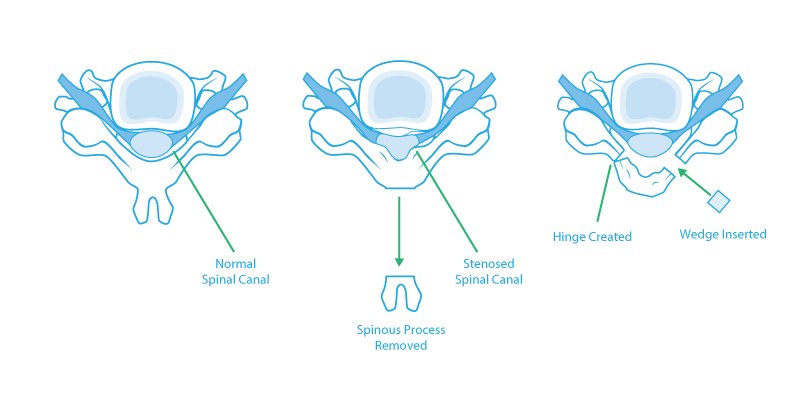Laminoplasty

The spinal cord and nerve roots in the neck are surrounded and protected by the cervical vertebrae. These bones have an opening called the spinal canal through which the spinal cord passes. Ligaments and blood vessels are also present in the spinal canal. The nerve roots start at the spinal cord and pass through an opening between the vertebrae called the intervertebral foramen (or neural foramen). From there, they extend to other parts of the body.
Spinal stenosis is a condition where there is narrowing of the spinal canal and often the neural foramen that causes compression of the spinal cord and/or nerve roots. This narrowing is caused by numerous factors including bone spurs, degeneration of the intervertebral disks and facet joints, and thickening of the ligaments. Among the symptoms spinal stenosis can produce are pain and/or numbness in the arms, clumsiness of the hands, and gait disturbances.
Laminoplasty is a procedure intended to relieve pressure on the spinal cord while maintaining the stabilizing effects of the posterior elements of the vertebrae.
The laminoplasty procedure involves "hinging" one side of the posterior elements of the spine and cutting the other side to form a "door." As seen in the illustrations here, the door is then opened and held in place with wedges. By relieving pressure on the spinal cord it is the goal of laminoplasty to stop the progression of damage to the spinal cord and allow for as much recovery of function as possible.
Posted on Mon, October 13, 2014
by Greg Neundorfer